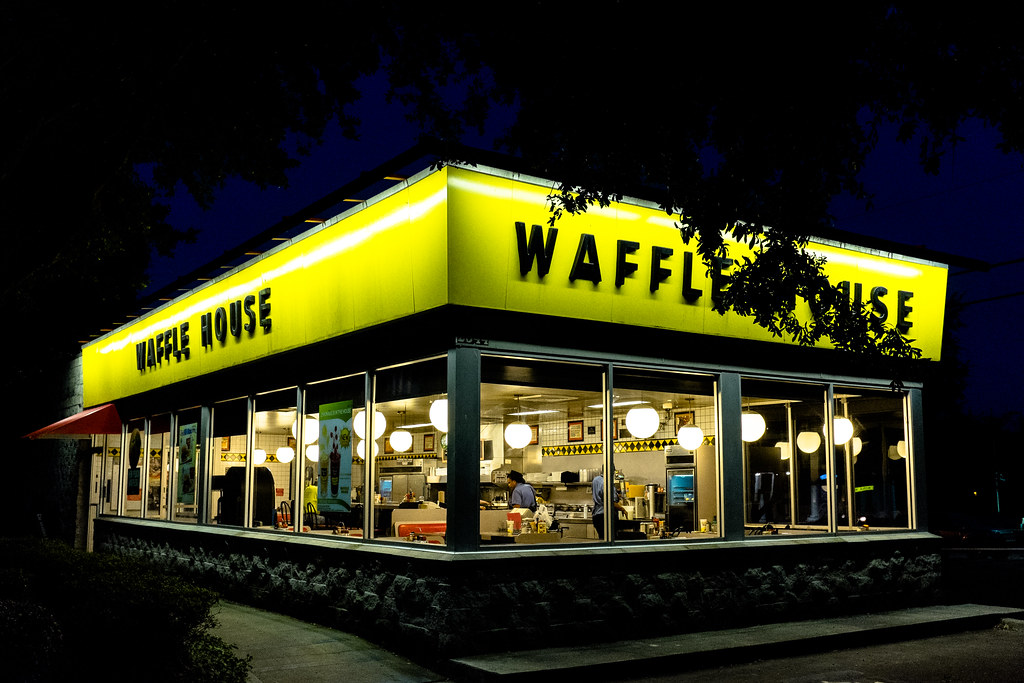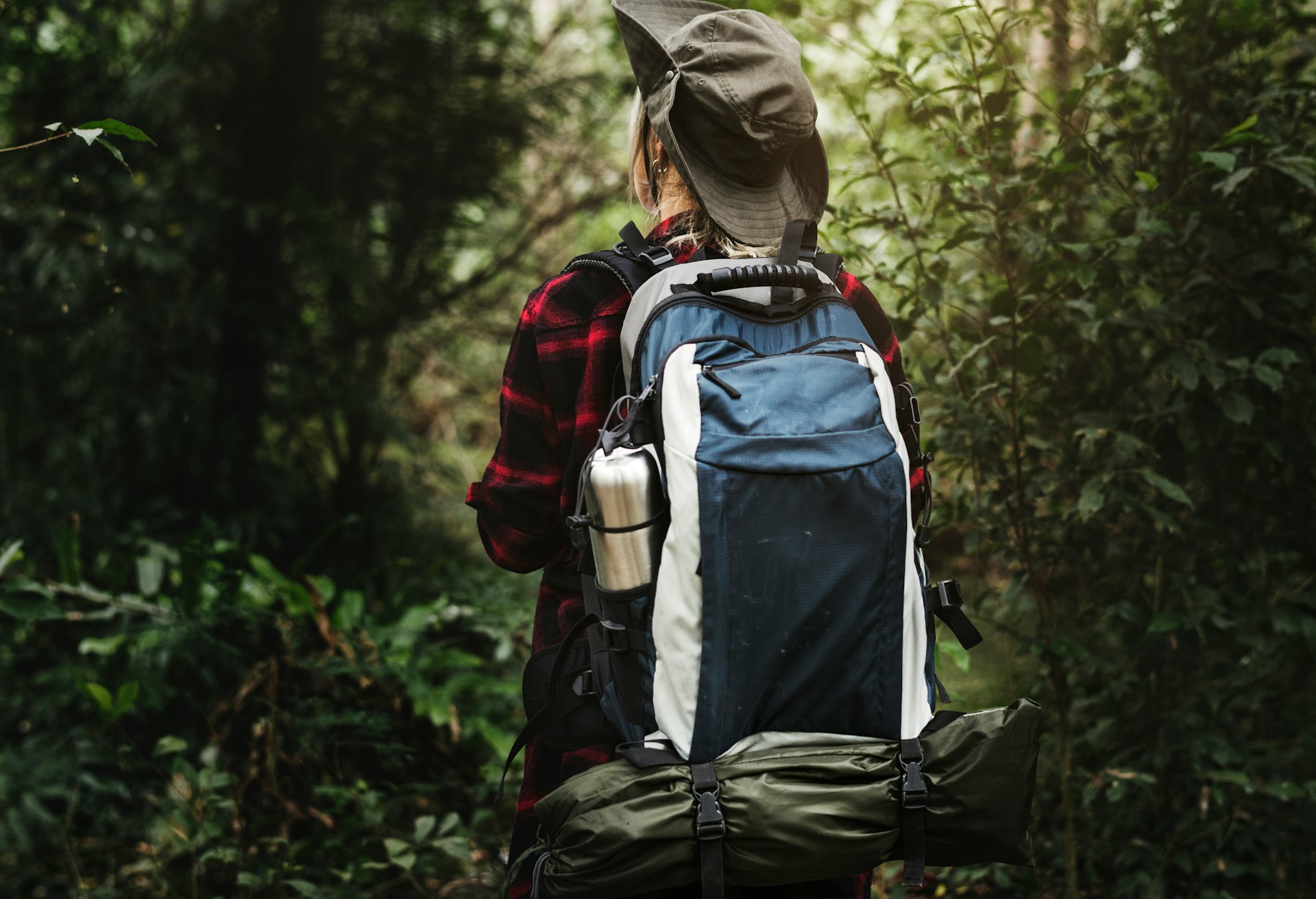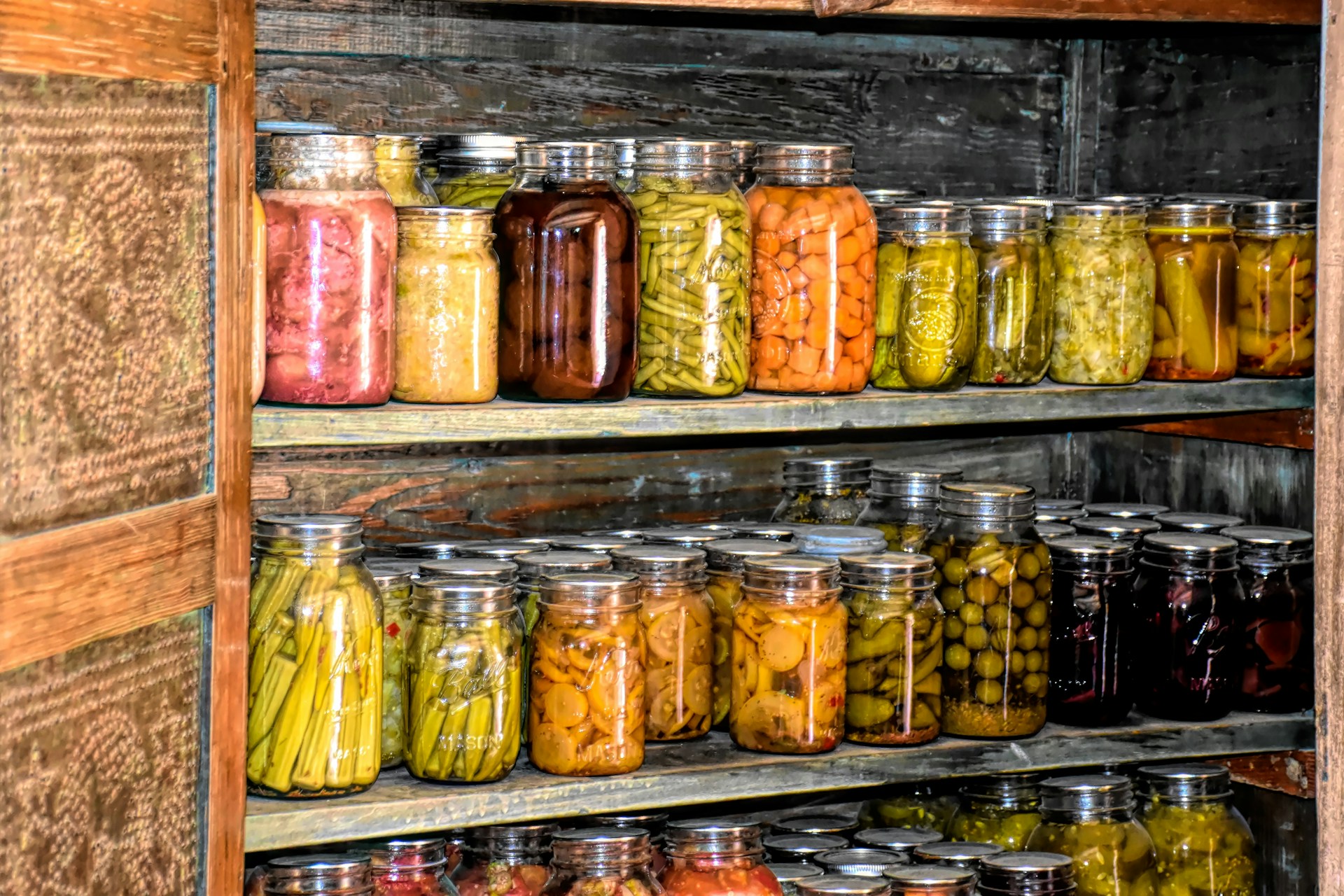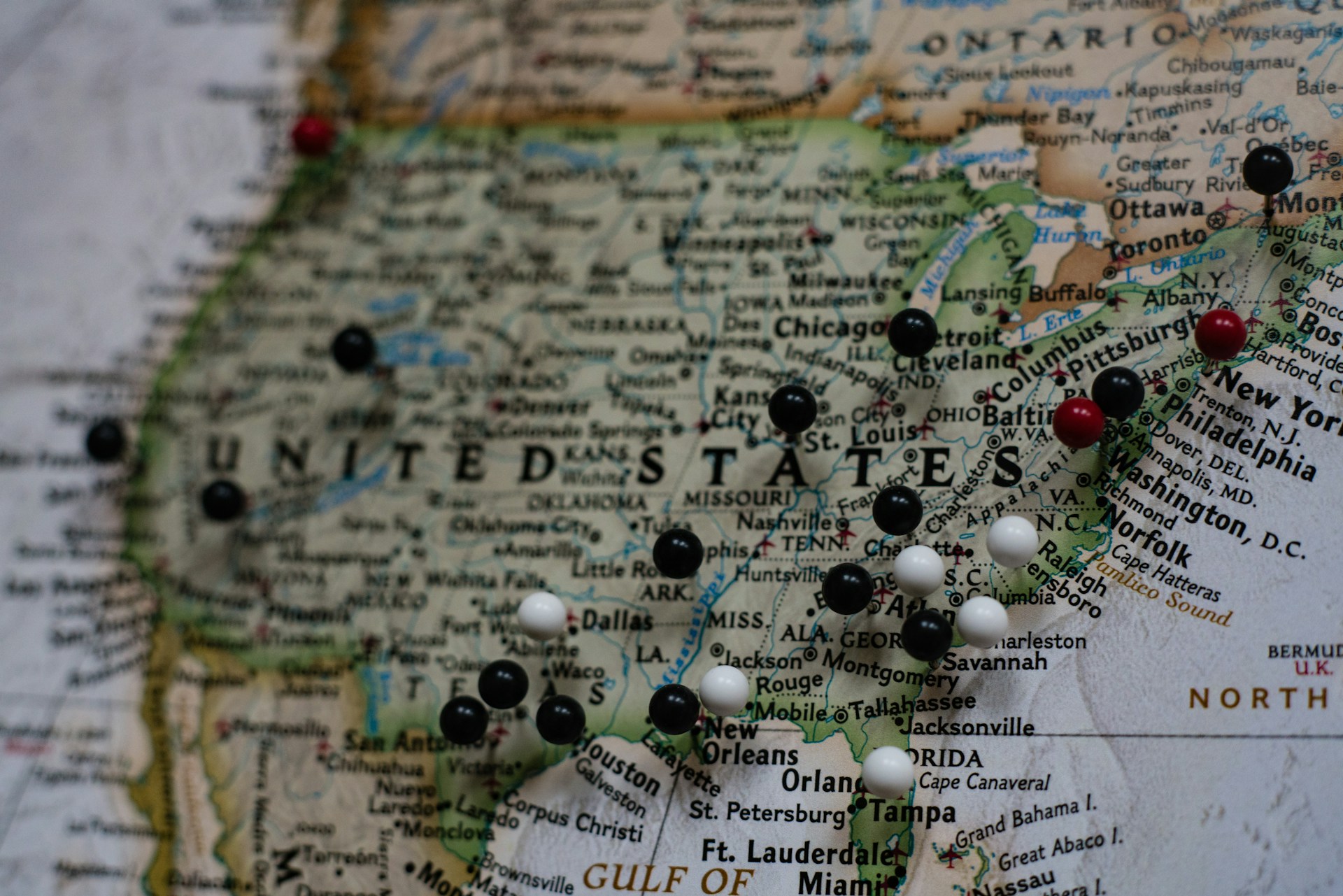Preparedness
Waffle House Tragedy: Teen Employee Fatally Shot

An 18-year-old employee tragically lost his life during a shooting at a Waffle House in Laurinburg, North Carolina, early Friday morning. The victim, Burlie Dawson Locklear, was at work when the incident occurred.
Laurinburg Police Captain Chris Young confirmed that a customer opened fire inside the restaurant. The incident took place around 12:45 a.m., according to WPDE. The suspect, described as a black male with light skin, long dreadlocks, and facial hair, became angry and verbally abusive while waiting for his food.
After receiving his meal, the suspect reportedly went to his vehicle. However, he then turned back and fired two shots toward the restaurant, fatally wounding Locklear.
The suspect fled the scene in a dark grey Chevrolet, possibly a 2014 model, as reported by ABC 11. Locklear was rushed to Scotland Memorial Hospital but unfortunately succumbed to his injuries. This marks the second shooting at this Waffle House location within the past year.
Incidents like these are not isolated to Laurinburg. Waffle Houses across the country have experienced similar violent events. In 2020, a man shot a Waffle House cook after being asked to wear a mask. In another instance, a gunman shot a customer who had been handing out $20 bills to other patrons.
Local Pastor Michael Edds, who resides near the Laurinburg Waffle House, expressed his frustration over the increasing violence.
“We have this young man trying to make a living, and some thug shoots him and kills him. We’ve got to be more reactive,” Edds told ABC 11.
Edds emphasized the need for increased police patrols around businesses, particularly at night. He called for proactive measures to ensure the safety of community members and workers alike.
Watch a local news report about the incident below:
Let us know what you think, please share your thoughts in the comments below.

Preparedness
Bug-Out Bag Essentials Every Prepper Needs for Emergencies

When disaster strikes, it’s often unexpected, leaving many unprepared and scrambling for essentials. One crucial aspect of preparedness is having a backup plan for your emergency supplies. Disasters have a knack for obliterating whatever stands in their way, including your meticulously gathered emergency provisions. This situation creates a dual problem: the financial burden of replacing those supplies and the immediate lack of essentials when they are most needed.
Fortunately, there’s a solution that many preppers already have in place, albeit sometimes without fully realizing its potential: the bug-out bag. This humble pack can serve as an invaluable lifeline during a shelter-in-place emergency.
A common strategy among seasoned preppers is to distribute emergency supplies throughout various locations in the home. This tactic ensures that if one area is compromised, supplies in other areas remain accessible. However, if this isn’t feasible, or if you simply haven’t had the time to implement it, a well-stocked bug-out bag kept in an easily accessible spot, like under the stairs or near the main exit, can be a lifesaver. It provides a fallback option when your primary supplies are inaccessible.
“During most major emergency events, there’s a strong chance you’ll be alone the first few days waiting for even the slimmest rescue assistance,” according to insights from disaster survivors. A bug-out bag equipped with 72 hours’ worth of food can bridge the gap until help arrives or until you can secure a more sustainable food source. While a two-week food supply is ideal, as even FEMA suggests, having three days’ worth of provisions can help you endure the immediate aftermath of a disaster.
Water is another critical component. A bug-out bag should include a 72-hour supply of water, which can sustain you until you locate a more substantial source. Moreover, if your bag includes a reliable water filter, you have a tool to stay hydrated for extended periods. With access to a basic water source, even a dirty one, you’re equipped to make it through challenging times.
In less severe situations, like short power outages or boil advisories, having a 72-hour water supply can prevent you from tapping into your long-term reserves prematurely. This foresight can save you from unnecessary stress during minor emergencies.
Power is another area where bug-out bags shine. “Lack of power is common among both” bugging out and bugging in scenarios. Therefore, it’s wise to include power sources such as batteries and solar chargers in your bag. These can keep essential devices like flashlights and chargers operational during the initial days of a disaster. A flashlight is indispensable for preventing injuries in the dark, while a charged device ensures you can maintain communication and access information.
Power outages are almost guaranteed in disasters, whether caused by earthquakes, hurricanes, wildfires, or blizzards. When the electricity fails, it could be down for days, if not longer. This is where the light sources in your bug-out bag become crucial. Having an extra flashlight or two ensures you’re prepared for any eventuality, whether a device fails, runs out of power, or additional help is needed for others.
In conclusion, while we often consider bug-out bags as tools for evacuation, their utility in shelter-in-place scenarios cannot be overstated. They provide a practical and effective backup plan, ensuring that even if your primary supplies are compromised, you have the essentials to weather the storm.
Let us know what you think, please share your thoughts in the comments below.
Preparedness
Maximize Pantry Space by Canning Entire Meals

If you’re already familiar with the basics of canning, you’ve likely ventured into preserving jams, jellies, or perhaps even some fruits and vegetables. But have you considered the potential of canning entire meals? This technique not only maximizes your canner’s utility but also proves to be a tremendous time saver.
Canning complete meals follows a process similar to traditional canning, but with the added benefit of having ready-to-eat meals that can be stored for years. One of the significant advantages is that these meals “last five times longer than frozen foods.”
While canned meals are a fantastic addition to your pantry, it’s advisable not to rely solely on them in emergencies. A well-rounded emergency supply should include a mix of canned, freeze-dried, and dehydrated foods, as these can offer longer shelf lives and potentially better nutrient retention.
For those new to canning, it’s wise to start with simple recipes. Begin with basic, one-to-two-ingredient items to gain experience and learn from any mistakes before moving on to more complex meals, such as those involving meat.
There are two main methods for canning whole meals: using raw ingredients or pre-cooked ingredients.
When canning with raw ingredients, you prepare them as if cooking on a stove or in an oven. Stack them in jars, leaving an inch of headspace for expansion. Fill the jars with the required liquid, such as hot water or broth, and then process them in a pressure canner, which cooks the food.
A few tips can enhance your raw ingredient canning experience. Layer each ingredient separately, such as beef, onions, and carrots in a beef stew. If you choose to add herbs and spices, “make herbs and spices your top layer” to avoid issues like gumming or burning. Be cautious with strong herbs like sage or oregano, as they can become bitter over time. Sometimes, seasoning with just salt is best, allowing you to add spices when you serve the meal.
If your recipe includes potatoes, remember to peel them to avoid having root vegetable skins in your jar.
Alternatively, you can pre-cook your meals before canning. This method is ideal for dishes like chili or spaghetti sauce, which benefit from simmering to blend flavors. Similar to raw canning, leave an inch of headspace, seal the jars, and process them in a pressure canner.
Ensure there are no air bubbles in the jar by using a wooden or plastic tool to gently stir the food around the jar’s circumference.
Not all foods are suitable for canning, so be mindful of what you choose to preserve. Carefully selecting ingredients will help ensure your meals last for years.
Embark on the journey of canning your own meals, and experience the convenience and satisfaction it brings. Let us know how your canning adventures unfold!
Let us know what you think, please share your thoughts in the comments below.
Preparedness
Discover Free Land in These Three Surprising States

While the Homesteading Act has long since been retired, the dream of acquiring free land in the United States is still very much alive. In recent years, numerous rural areas have opened their doors, offering free land to encourage growth and development. These opportunities often come with specific requirements, but they are generally manageable. Let’s explore three states where you can still find free land today.
Minnesota stands out as a prime location for those seeking free land. Known as the “Land of 10,000 Lakes,” Minnesota offers a unique blend of affordability and natural beauty. The state’s cost of living is relatively low, making it an ideal place to build a home on free land. Minnesota is rich in outdoor activities, with ample opportunities for swimming, canoeing, fishing, and ice skating, depending on the season.
Currently, two towns in Minnesota are offering free land: Claremont and New Richland. In Claremont, the homesteading program is targeted toward individuals with an income below $84,200 or families of three or more earning less than $98,830. Meanwhile, New Richland, a more developed town with golf courses and extensive hiking and biking trails, requires recipients to build a home within 12 months of acquiring the land.
Nebraska is another state where you can find free land, and it’s renowned for its friendly communities and strong family values. The state boasts the lowest unemployment rate in the country, making it an attractive option for those looking to settle down. Additionally, Nebraska offers low-cost healthcare, which is particularly appealing for retirees or families with young children.
Two towns in Nebraska currently provide free land opportunities. Curtis, a city located 40 minutes from five lakes, is known for having some of the best-tasting water in America. The free lots in Curtis come with amenities such as paved roads. Elwood, another charming town, markets itself as “one of the nicest towns in Nebraska.” It features a country club, reservoir, and plenty of hunting opportunities. To secure free land in Elwood, a $500 payment is required for the deed, and the home built must be at least 1,400 square feet on a foundation.
Lastly, Kansas offers affordable living and is famous for its Kansas-style barbecue. The state ranks well for low gas costs and home prices, making building a new home financially feasible. Kansas also offers exciting sports culture, particularly in college basketball, with two world-class programs in the state.
Three cities in Kansas currently offer free land. Plainville, a town equipped with essential amenities such as a hospital, schools, and various businesses, requires a $500 deposit for the land, refundable upon completion of the lot transfer. Construction must be completed within 18 months, and mobile homes are not permitted. Mankato, a small town with approximately 800 residents, offers a school, hospital, restaurants, and a shopping center. Building must commence within six months, with a two-year deadline for completion. The home must measure a minimum of 1,200 square feet. Finally, Lincoln, known as the “post rock” capital of Kansas, provides well-developed free lots with streets, gutters, and curbs, ready for new construction.
These states present unique opportunities for those looking to embrace a homesteading lifestyle, offering a chance to build a new life on free land. Whether it’s the lakes of Minnesota, the community spirit of Nebraska, or the affordability and culture of Kansas, each state has its own distinct advantages for prospective settlers.
Let us know what you think, please share your thoughts in the comments below.
-

 Tactical1 year ago
Tactical1 year ago70-Year-Old Fends Off Intruder with Lead-Powered Message
-

 Tactical1 year ago
Tactical1 year agoVape Shop Employee Confronts Armed Crooks, Sends Them Running
-

 Preparedness10 months ago
Preparedness10 months agoEx-Ballerina’s Guilty Verdict Sends Tremors Through Gun-Owner Community
-

 Preparedness8 months ago
Preparedness8 months agoGood Samaritan Saves Trooper in Harrowing Interstate Confrontation
-

 Tactical1 year ago
Tactical1 year agoMidnight SUV Theft Interrupted by Armed Homeowner’s Retaliation
-

 Survival Stories2 years ago
Survival Stories2 years agoEmily’s 30-Day Experience of Being Stranded on a Desert Island
-

 Preparedness9 months ago
Preparedness9 months agoArizona Engineer’s Headless Body Found in Desert: Friend Charged
-

 Preparedness8 months ago
Preparedness8 months agoBoy Saves Dad from Bear Attack with One Perfect Shot
Old Man
September 24, 2024 at 11:16 am
“The suspect, described as a black male” No surprise here.
Don
September 24, 2024 at 12:11 pm
To many men have no valve for life especially young black men.
Roland
September 24, 2024 at 12:46 pm
The comment in the article wants more protection. The only things needed is more severe punishment including mandatory death penalty for killing someone while committing a crime. Punishment should be administered immediately. And Definitely No Plea Bargaining when you kill someone while you are committing a crime.